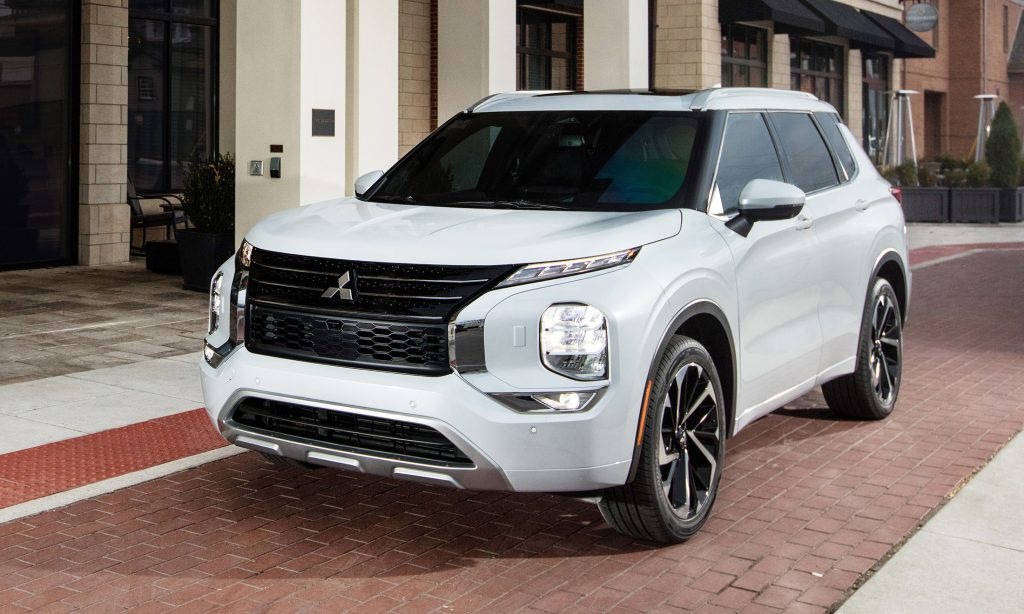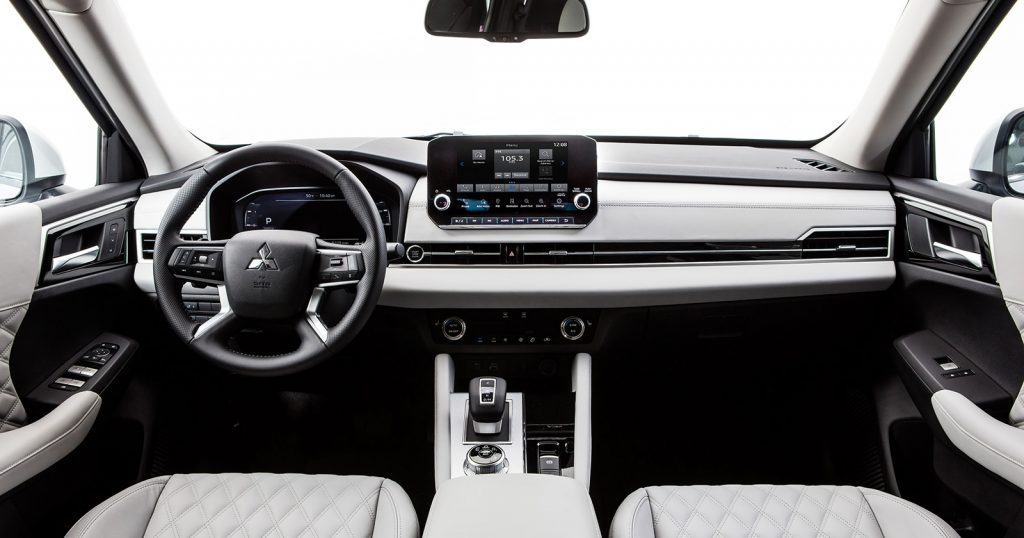Cargazing
By Derek Price
Translated as “authentic and majestic,” according to Mitsubishi, “I-Fu-Do-Do” is exactly what the Outlander needs to achieve if it wants to make a dent in the hyper-competitive market for family crossovers.
Let’s break it down into the two parts.
On the authentic side, the Outlander needs to come with some real capability, not just a purposeful looking body. A completely new platform gives it a stiffer, more robust chassis and a decent 8.4 inches of ground clearance, something useful when putting its sophisticated new all-wheel-drive system to the test.
Mitsubishi dipped into its deep well of experience in rally racing to create this latest version of its four-wheel traction system, called Super All-Wheel Control (S-AWC). Available as an $1,800 option, it comes with six different options for various driving conditions.

Mitsubishi completely redesigned the Outlander for 2022, giving it a more aggressive look, roomy cabin and up-to-date tech features.
The six modes can optimize it for gravel, snow and mud, all common settings on off-road vehicles, plus three modes for pavement: Normal, Tarmac and Eco.
Tarmac makes the Outlander respond faster for a sportier feel, and Eco helps save gas.
I found myself perfectly happy in Normal mode during most of my week behind the wheel. Despite making a ho-hum 181 horsepower from its 2.5-liter, four-cylinder engine, it never felt like a slouch when accelerating, no doubt because of the new frame design that feels both light and solid from the driver’s seat.
Unfortunately, it no longer is available with a V6 engine. If you want an Outlander, you get it with four cylinders and a continuously variable transmission, period.
On the bright side, that combo results in good gas mileage for a vehicle this size. My all-whee-drive tester was rated for 24 mpg in city driving and 30 on the highway.

The Outlander’s cabin looks much more upscale and contemporary after the redesign. It also comes standard with a third-row seat.
It can tow up to 2,000 pounds, not a truck-like number but enough to be useful for pulling weekend toys.
On the majestic side, the 2022 Outlander has a much bigger, nicer cabin than before with optional touches such as quilted leather seats and a full-featured digital interface. While it doesn’t convey majesty in the same manner as, say, a Rolls-Royce, it’s a fitting word when compared to the aging outgoing model it replaces.
This fresh Outlander also has something unusual to find in a small crossover: a third-row seat.
While I wouldn’t recommend it for owners who need to fill all three rows with passengers on every trip, Mitsubishi managed to squeeze in a usable third row. It comes standard on every Outlander, a nice feature for people who want to haul extra people — ideally, small ones — in a pinch.
Also standard are Apple CarPlay and Android Auto.
The Outlander shares its bones with a corporate cousin, the Nissan Rogue, but the Mitsubishi’s boxy, rugged look does a good job masking that fact. It looks more like a traditional SUV than a car.
It also offers peace of mind through solid warranty coverage, including 10 years or 100,000 miles on the powertrain.
Pricing starts at $25,795 for the base ES trim and ranges up to $34,645 for the SEL with the Touring package, including a fantastic Bose sound system and head-up display that projects on the windshield.
At A Glance
Wheelbase: 106.5 in.
Length: 185.4 in.
Width: 84.4 in.
Height: 68.7 in.
Engine: 2.5-liter four cylinder (181 hp, 181 lbs.-ft.)
Transmission: Continuously variable
Fuel economy: 24 city, 30 highway
RATINGS
Style: 7
Performance: 7
Price: 9
Handling: 6
Ride: 7
Comfort: 8
Quality: 6
Overall: 7
Why buy it?
A complete redesign improves the Outlander in almost every way. Better driving dynamics, a bigger cabin and more upscale cabin keep it competitive in a hot market.
